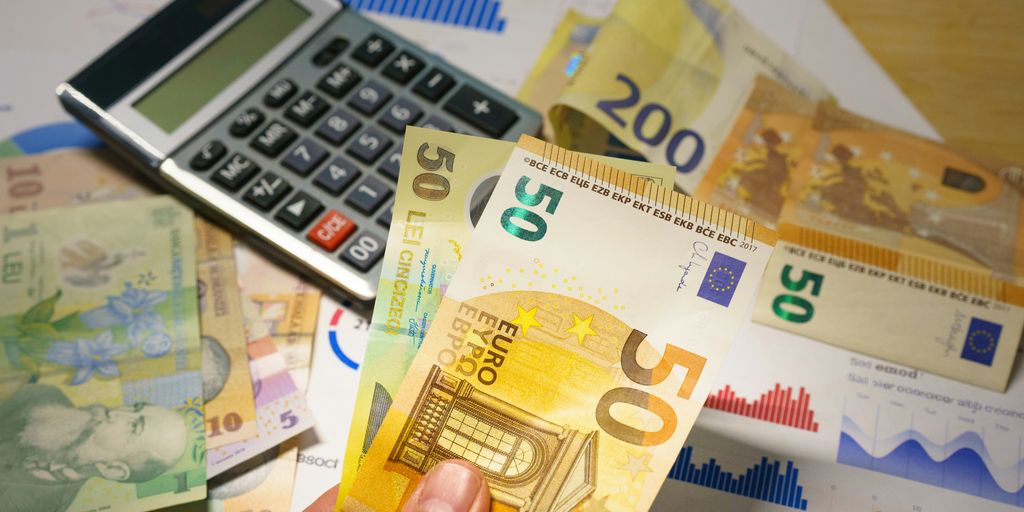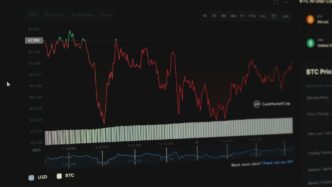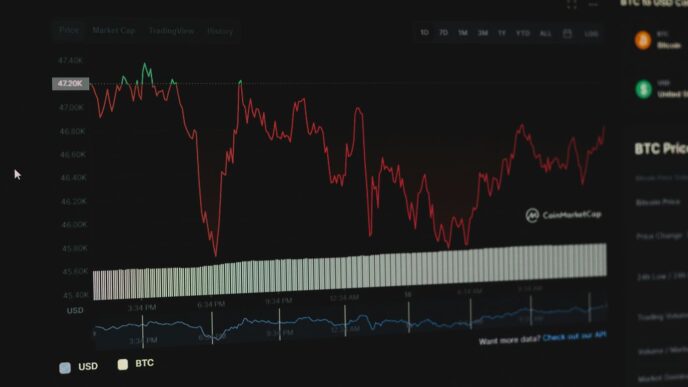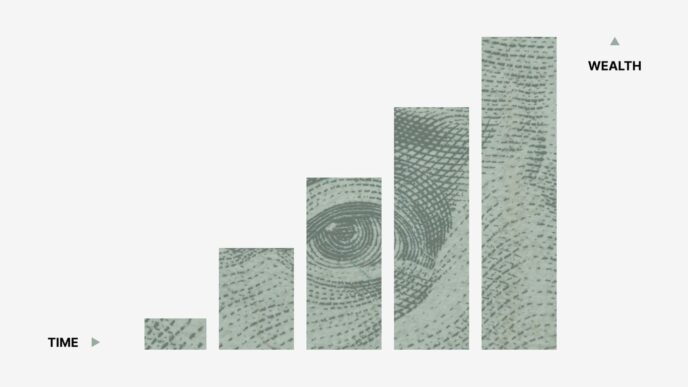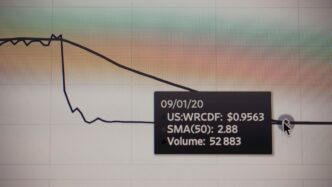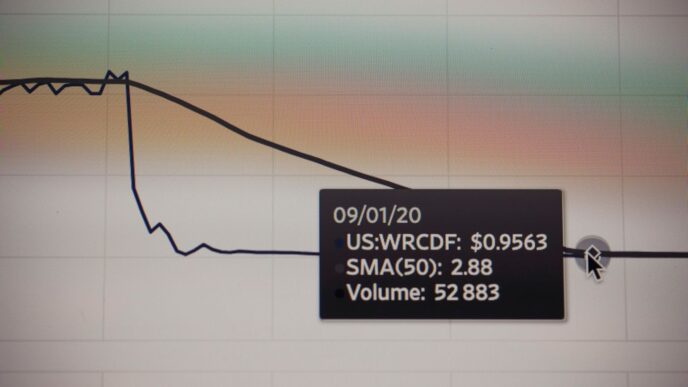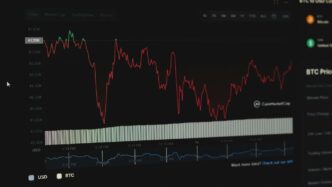Ever wonder what the global economy will look like in 2050? It’s not just about guessing; smart folks are actually using data and trends to make some pretty educated predictions. This article looks into those forecasts, especially focusing on the list of countries by GDP in 2050. We’ll check out which countries are expected to grow big, which ones might slow down, and what all this means for how the world works.
Key Takeaways
- Figuring out future GDP isn’t easy; you have to think about things like purchasing power and the difference between nominal and real GDP.
- The world’s economic power is shifting, with new countries becoming major players and older ones adjusting to new realities.
- Some nations, like Turkey, India, and Indonesia, are expected to climb way up the list of countries by GDP in 2050.
- How GDP is calculated can change a lot, and you have to be careful about how reliable the data from big organizations really is.
- Future economic growth depends on things like new technology, how populations change, and what’s going on with global trade.
Understanding GDP Projections for 2050
Okay, so let’s talk about what it even means to try and guess what the world’s economy will look like almost 30 years from now. It’s not like predicting the weather next week; there are a ton of moving parts, and things can change fast. We’re going to look at some of the key concepts and challenges involved.
The Role of Purchasing Power Parity (PPP)
PPP is a big deal when we’re comparing economies across different countries. Basically, it tries to level the playing field by accounting for the fact that a dollar (or any currency) doesn’t buy the same amount of stuff everywhere. PPP gives us a better sense of the actual living standards and economic output in different nations. For example, imagine a haircut costs $15 in the US but only $5 in India. Nominal GDP figures might make the US economy look way bigger, but PPP would adjust for this difference in price levels, giving a more accurate comparison of the real economic activity. It’s not perfect, but it’s a crucial tool. You can find more information about economic trends here.
Distinguishing Nominal GDP from Real GDP
Nominal GDP is just the raw number – the total value of goods and services produced in a country, measured in current prices. The problem? Inflation. If prices go up, nominal GDP can increase even if the actual amount of stuff being produced stays the same. That’s where real GDP comes in. Real GDP adjusts for inflation, giving us a more accurate picture of economic growth. Think of it like this: nominal GDP is like looking at your paycheck without considering how much prices have gone up, while real GDP is like adjusting your paycheck for inflation to see if you can actually buy more stuff. It’s important to understand the difference between nominal GDP and real GDP.
Challenges in Long-Term Economic Forecasting
Okay, let’s be real: predicting the future is hard. Really hard. Especially when you’re talking about something as complex as the global economy. Here are just a few of the things that can throw a wrench in the works:
- Technological breakthroughs: Who knows what new technologies will emerge and how they’ll impact different industries and economies? Think about how the internet changed everything – nobody saw that coming on the scale that it did.
- Geopolitical events: Wars, political instability, and changes in government policy can all have huge economic consequences. Predicting these events is basically impossible.
- Demographic shifts: Changes in population size, age distribution, and migration patterns can all affect economic growth. For example, an aging population might lead to slower growth, while a growing population could boost demand.
- Resource availability: Access to natural resources like oil, minerals, and water can be a major factor in economic development. But these resources are often unevenly distributed, and their availability can change over time.
- Climate change: This is a big one. The effects of climate change, like rising sea levels, extreme weather events, and disruptions to agriculture, could have devastating economic consequences. It’s important to consider GDP calculation methods when forecasting.
Basically, long-term economic forecasting is more of an art than a science. There are just too many unknowns to make truly accurate predictions. But that doesn’t mean it’s not worth trying! Even if the forecasts aren’t perfect, they can still give us valuable insights into potential future trends and challenges.
Shifting Global Economic Powers
It’s pretty clear the global economic landscape is changing. We’re not in the same world we were even a decade ago. Some countries are rising, others are adjusting, and it’s all happening pretty fast. It’s not just about who has the most money right now, but who’s positioned to grow and adapt in the coming decades. This section looks at how those powers are shifting.
Emerging Markets Reshaping the Landscape
Emerging markets are no longer just ‘up-and-coming’; they’re actively reshaping the global economy. These countries are experiencing rapid growth, driven by factors like increasing populations, urbanization, and technological adoption. Think about it: a huge population entering the workforce, combined with better infrastructure and access to technology, can create a massive economic boost. These countries are becoming major players in trade, investment, and innovation. For example, Asia’s economies were the great beneficiaries of a globalizing world. You can see the top 20 global economies are analyzed considering economic fundamentals and geopolitical factors.
Established Economies Facing New Realities
While emerging markets are surging, established economies are facing new challenges. Slower population growth, aging workforces, and increasing debt levels are creating headwinds. These countries need to adapt by focusing on innovation, productivity improvements, and structural reforms. It’s not about decline, but about adjusting to a new world where they’re no longer the only game in town. They need to find new ways to compete and collaborate in a more multipolar world. The strategic importance of many trade flows, from chips to minerals to energy resources, is coming into focus.
Key Drivers of Economic Transformation
Several factors are driving this economic transformation:
- Technology: Advancements in automation, artificial intelligence, and renewable energy are disrupting industries and creating new opportunities.
- Demographics: Population growth, aging, and migration patterns are impacting labor markets and consumer demand.
- Globalization: While globalization isn’t new, its form is changing, with new trade agreements and supply chain configurations emerging. Strategic considerations could reshape trade growth if there are tensions.
- Policy: Government policies related to trade, investment, and regulation play a crucial role in shaping economic outcomes.
These drivers are interconnected and create a complex web of influences that will determine the future of the global economy.
The Rise of Specific Nations in the list of countries by GDP in 2050
It’s always interesting to look at projections, especially when they involve big shifts in global power. When we look at the list of countries by GDP in 2050, some nations are expected to climb significantly, shaking up the established order. It’s not just about the usual suspects anymore; several emerging economies are poised to make a huge impact.
Turkey’s Projected Economic Ascent
Turkey is one country that’s predicted to rise substantially in the rankings. Currently, it sits at a respectable position, but by 2050, projections show it jumping several spots to become a major economic force. This rise is attributed to a mix of factors, including a growing population, strategic location, and diversified economy.
To give you an idea, here’s a simplified look at the projected change:
| Country | Current Rank | Projected Rank (2050) |
|---|---|---|
| Turkey | (e.g., 17th) | (e.g., 11th) |
Turkey’s economy has shown impressive growth in recent years, driven by its strong manufacturing base and increasing exports. It’s a major producer of agricultural products, textiles, vehicles, and construction materials. If they keep up the pace, they could definitely become a top economy.
India and Indonesia’s Growing Influence
India and Indonesia are two other giants that are expected to see significant economic growth. Both nations have large populations, which translates to a massive workforce and consumer market. Their strategic locations also give them an edge in global trade. Here are some key factors driving their growth:
- Demographic Advantage: Large and young populations provide a strong labor force.
- Infrastructure Development: Investments in infrastructure are improving connectivity and efficiency.
- Policy Reforms: Government policies are aimed at attracting foreign investment and promoting economic growth.
These countries are not just growing; they’re transforming, and their influence on the global stage will only increase in the coming decades.
Other Notable Climbers in the Rankings
Besides Turkey, India, and Indonesia, several other countries are expected to climb the ranks. These include nations in Southeast Asia, Africa, and South America. Their growth is often driven by factors like:
- Natural Resources: Abundant natural resources provide a foundation for economic development.
- Strategic Investments: Targeted investments in key sectors are driving growth.
- Regional Integration: Increased regional trade and cooperation are boosting economies.
It’s an exciting time to watch these emerging economies as they challenge the established order and reshape the global economic landscape. It’s not just about the numbers; it’s about the potential for these nations to improve the lives of their citizens and contribute to a more balanced and prosperous world.
Methodologies and Data Integrity in GDP Forecasting
Variations in GDP Calculation Methods
Okay, so when we talk about GDP, it’s not like everyone’s using the exact same recipe. Different countries and organizations use slightly different methods to calculate it, which can lead to some pretty big discrepancies. For example, some countries might include estimates of the informal economy, while others don’t. Some might use different base years for inflation adjustments, and others might have unique ways of valuing certain sectors. These methodological differences can make comparing GDP figures across countries a bit like comparing apples and oranges. It’s important to understand these variations when looking at GDP projections, especially for something as far out as 2050. It’s not a perfect science, and these differences add a layer of complexity.
The Impact of Creative Finance on Projections
Let’s be real, sometimes countries get a little creative with their finances. This isn’t necessarily a bad thing, but it can definitely throw a wrench in GDP projections. Think about things like special economic zones, tax incentives, or even just changes in accounting practices. These can all artificially inflate or deflate GDP figures in the short term, making it harder to predict long-term trends. It’s like trying to predict the weather when someone keeps messing with the thermometer. You need to look beyond the surface numbers and understand the underlying financial strategies that could be influencing those figures. It’s also worth noting that creative finance can sometimes mask underlying economic problems, which can lead to inaccurate projections down the line.
Reliability of International Institutional Data
We often rely on data from international institutions like the IMF or the World Bank for GDP projections. But how reliable is this data, really? Well, it’s generally considered to be pretty good, but it’s not perfect. These institutions rely on data provided by individual countries, and sometimes that data isn’t as accurate or up-to-date as we’d like. Plus, there can be political pressures that influence the data that countries report. Also, these institutions have to make assumptions and use models to fill in the gaps, which introduces another layer of uncertainty. So, while this data is a valuable resource, it’s important to take it with a grain of salt and consider other sources of information as well. It’s a good starting point, but not the final word. Here’s a quick rundown of potential issues:
- Data collection inconsistencies across nations.
- Potential for political influence on reported data.
- Model limitations and assumptions affecting projections.
Factors Influencing Future Economic Growth

Technological Advancements and Innovation
Okay, so, tech is a big deal, right? It’s not just about cool gadgets; it’s about how we do things. Think automation, AI, and new materials – these things can seriously boost productivity. But it’s not a given. Countries need to invest in research, education, and infrastructure to actually make use of these advancements. If you don’t adapt, you’re gonna get left behind. It’s like the industrial revolution all over again, but faster and with more robots.
Demographic Shifts and Labor Markets
Who’s working, and how many of them are there? That’s what demographics are all about. An aging population can be a drag on the economy because there are fewer workers supporting more retirees. On the other hand, a young, growing population can provide a boost, if they have the skills and education needed for the jobs of the future. Urbanization also plays a role. More people are moving to cities, especially in places like China and India. China’s urbanization rate is expected to hit 80 percent in 2050. This can lead to increased productivity, but it also puts a strain on resources and infrastructure. It’s a balancing act. The future automotive industry will be impacted by these shifts.
Global Trade Dynamics and Policy
Trade is the lifeblood of the global economy. But it’s not always smooth sailing. Trade wars, tariffs, and other protectionist measures can disrupt supply chains and slow down growth. On the other hand, free trade agreements and open markets can boost economic activity. It all depends on the policies that countries put in place. And it’s not just about trade in goods; it’s also about trade in services, investment flows, and intellectual property. It’s a complex web of interconnected factors.
Here’s a quick look at how regional GDP growth might look:
| Region | Projected GDP Growth (2021-2040) |
|---|---|
| Asia | 3.6% per year |
| Europe | 1.3% per year |
| North America | 1.7% per year |
Implications for International Relations and Trade
New Alliances and Economic Partnerships
The projected shifts in GDP by 2050 will likely cause some realignments in international relations. Countries with growing economic power will seek stronger alliances to protect their interests and expand their influence. We might see new trade blocs forming, or existing ones like the EU and RCEP’s impact becoming even more important. It’s all about who has the money and how they choose to use it.
Potential Shifts in Global Supply Chains
As certain nations rise in economic prominence, global supply chains will probably change. Companies will look to diversify their manufacturing and sourcing to reduce dependence on any single country. This could mean more investment in countries with growing economies, leading to new global trade dynamics and altered trade routes. It’s a game of risk management, really.
Here are some potential shifts:
- Increased manufacturing in India and Indonesia.
- Diversification of rare earth mineral sources.
- More regional supply chains within Africa.
The Future of Multilateral Economic Organizations
The existing multilateral economic organizations, like the World Trade Organization (WTO) and the International Monetary Fund (IMF), might need to adapt to the changing global economic landscape. The rise of new economic powers could lead to calls for reforms in these organizations to better reflect the current balance of power. Will they be able to adapt, or will we see new institutions emerge? It’s a question of international cooperation and representation.
Beyond the Numbers: Quality of Life and Development
Okay, so we’ve been talking a lot about GDP, projections, and which countries are going to be economic powerhouses in 2050. But let’s be real for a second: what does all that actually mean for people’s lives? A country can have a massive GDP, but if that wealth isn’t trickling down, or if it’s coming at the expense of the environment or people’s well-being, then what’s the point? It’s time to look at what really matters.
Connecting GDP Growth to Human Development
GDP growth alone doesn’t automatically translate to better lives. You need to consider things like access to healthcare, education, and basic services. A country could have a booming economy, but if a large portion of the population is struggling to make ends meet, then the GDP figures are just numbers on a page. It’s about converting that economic success into tangible improvements in people’s daily lives. For example, countries experiencing a technology boom need to ensure that the benefits extend beyond just the tech sector.
Addressing Income Inequality in Growing Economies
Income inequality is a huge problem in many rapidly growing economies. You might see a small percentage of the population getting incredibly wealthy, while the majority are left behind. This can lead to social unrest and instability. It’s important for governments to implement policies that promote fairer distribution of wealth, like progressive taxation and social safety nets. We need to think about how to make growth more inclusive.
Sustainable Development Goals and Economic Progress
The Sustainable Development Goals (SDGs) are a set of targets adopted by the United Nations to address global challenges like poverty, inequality, and climate change. Economic progress needs to be aligned with these goals to ensure that it’s sustainable in the long run. This means investing in renewable energy, promoting responsible consumption, and protecting the environment. It’s not just about growing the economy; it’s about growing it in a way that benefits everyone and protects the planet for future generations. Here are some key areas to consider:
- Environmental Sustainability: Reducing carbon emissions and protecting natural resources.
- Social Inclusion: Ensuring equal opportunities for all, regardless of background.
- Good Governance: Promoting transparency and accountability in government and business.
Conclusion: What Does This All Mean?
So, looking at these GDP numbers for 2050, it’s pretty clear things are going to shift around a lot. We’re talking about some big changes from what we see today. Countries that are growing fast now, like some in Asia, are set to become major players. Meanwhile, some of the older, more established economies might not be at the very top anymore. It just goes to show that the world economy is always moving, and what’s true today might not be true tomorrow. These projections give us a good idea of where things are headed, but hey, a lot can happen in a few decades. It’ll be interesting to see how it all plays out.
Frequently Asked Questions
What exactly is GDP, and why are we looking at it for 2050?
GDP stands for Gross Domestic Product. It’s like a report card for a country’s economy, showing the total value of all the goods and services made there in a certain amount of time. When we talk about GDP for 2050, we’re guessing how big each country’s economic report card will be in the future.
What’s the difference between PPP, Nominal GDP, and Real GDP?
PPP, or Purchasing Power Parity, helps us compare how much stuff you can buy with the same amount of money in different countries. It’s important because a dollar in one country might buy more than a dollar in another. Nominal GDP is just the raw number, while Real GDP tries to account for things like price changes over time, so we get a truer picture of growth.
How accurate can these long-term economic predictions really be?
It’s super hard! We have to guess about things like new technologies, how many people will be working, and what global trade will look like. Think of it like trying to predict the weather really far in advance – you can make educated guesses, but there are always surprises.
Which countries are expected to see the most economic growth by 2050?
Many experts believe countries like India, Indonesia, and Turkey will grow a lot. This is because they have large, young populations, are making big improvements in their industries, and are becoming more important in global trade.
Why do different groups sometimes have different GDP predictions for the same country?
Different groups, like the World Bank or the International Monetary Fund, use slightly different ways to crunch the numbers. Also, some countries might report their economic data in ways that make them look better, which can make it tricky to compare fairly.
Does a higher GDP automatically mean a better life for everyone in a country?
While a big GDP means a country is making a lot of money, it doesn’t automatically mean everyone is living well or that the environment is healthy. Things like how income is shared, access to good healthcare, and clean air and water are also super important for a good quality of life.


